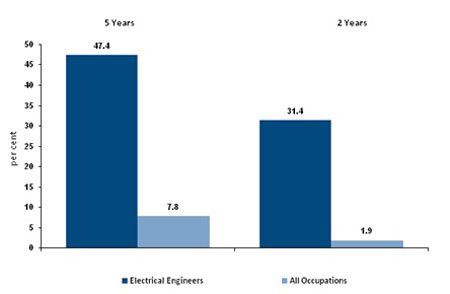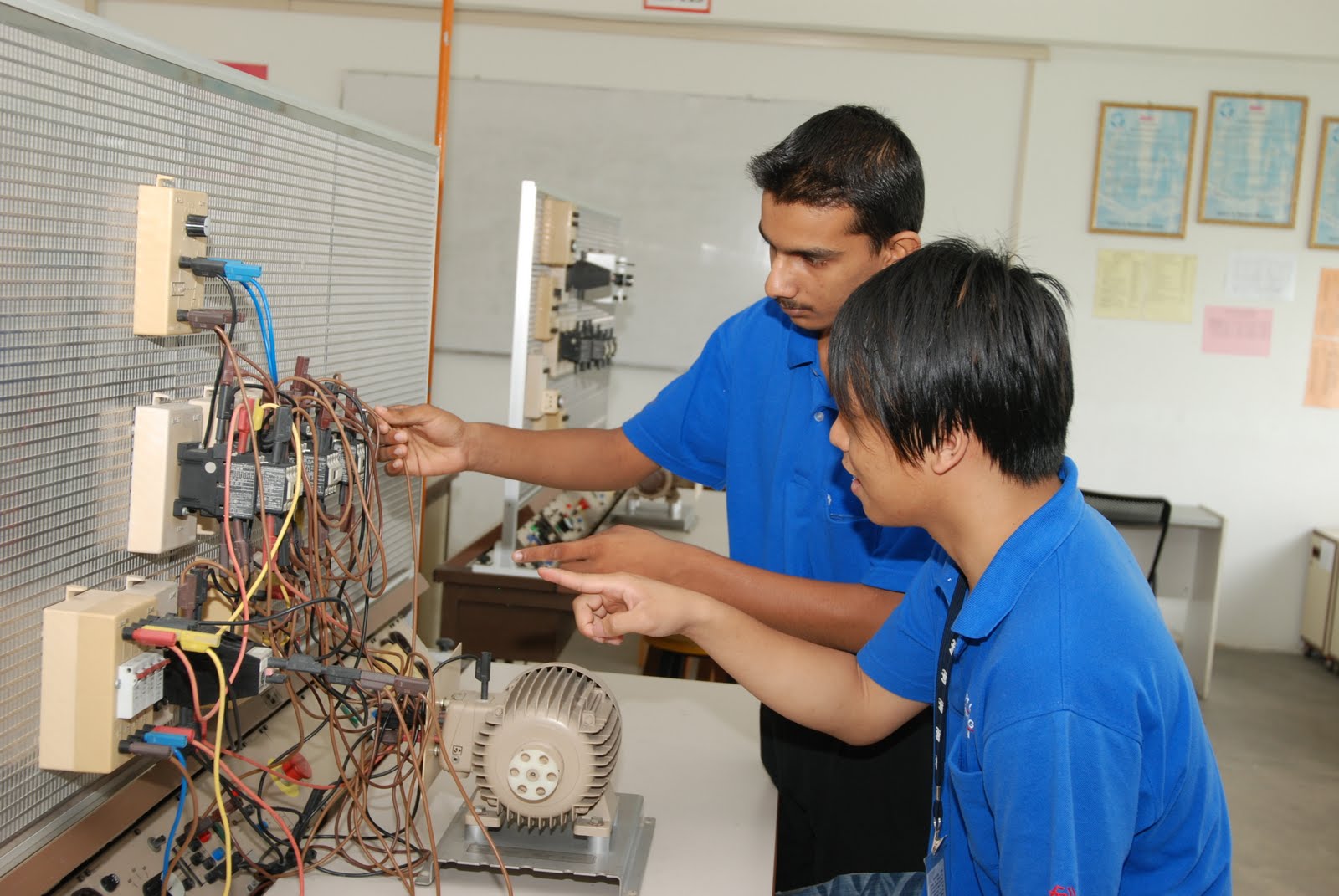Electrical – Electronic Engineering: Diverse Career Opportunities, Great Income

Though it is an important profession in life and production, Electrical – Electronic Engineering yet to be unknown by many parents and students. The main anxiety of students were ways of learning, career opportunities and income be like? In this article, OISP will help you understand more about this industry in contribution to the decision-making of your future career.
THE INCREASING DEMAND ON MANPOWER
Although this industry has developed for a very long time, the technology world is developing day by day becoming more practical which leads to the increasing demand on Electrical – Electronic Engineering manpower.
According to US News figures in 2013, US professional electrical engineers ranked 8th in the the top 10 jobs with starting salary higher than the average annual salary of one – 54.400 USD (approximately 1.15 billion VND).
In Australia, electrical engineers have the highest growth rate in recent years, up to 47.4% compared with average rate at 7.8% of all industries. According to statistics in November 2012, there are about 25,100 employees currently working in this industry. This number is expected to increase approximately from 10,001 to 25,000 employees until November 2017. Electrical engineering jobs in Australia are mainly full-time (accounting for 95.5%) with an average working time at 41,7 hours/week and average pre-tax income at 1.841 AUD/week (equivalent to 40.5 million VND / week). (Source: Joboutlook.gov.au)


The chart shows the employment growth rate (%) within 5 years in general and 2 years for the electricity industry.
(Source: ABS LFS, DEEWR – November 2012 data).
In Vietnam, according to the Center of Forecasting Manpower Needs and Labor Market Information HCMC (FALMI), there are several of mechanical – engineering professions such as: Electronics and Telecommunications, Mechatronics, Metallurgy, Automotive,… are at lack of manpower. However, the amount of current human resources that meet the needs of enterprises of this sector only reached 54.87%. Thus, employment opportunities for the students of this industry is massive.
WHAT DO ELECTRICAL – ELECTRONIC ENGINEERING GRADUATES DO?
Social development, the modernization of production to improve labor productivity is a crucial mission. Currently, the plants are directed to use automated machine control through the control system. Setting up these automatic control system is the work of electrical – electronic engineers.

Not only males but also females can be experts in Electrical – Electronic Engineering.
(Photo: huffingtonpost.com)
Since the learned knowledge is related to electricity and electronics, Electrical – Electronic Engineers can work in various positions beside those above. For example, they can work at a power company; a power manufacturing, distributing and consuming factory; laboratories, business establishments, research on the planning grid. Electrical – Electronic Engineers can take part in direct work or consulting in design, grid operating at all companies, factories in the export processing zones (EPZ), industrial parks, units of industrial production.
Additionally, Electrical – Electronic Engineers can work in the telecommunications industry, Vietnam General Department of Electronics and its subsidiaries …
As important and diverse career opportunities, students in Electrical – Electronics can be confident of a suitable job with a steady income after graduation.
WHAT DO ELECTRICAL – ELECTRONIC ENGINEERING STUDENTS STUDY?

The curriculum is mostly concentrated on courses related to electrical and electronic devices.
(Photo: wonderfulengineering.com)
The major signature of electrical – electronic industry is to build automated control systems by electrical signals; and control the power to the machine parameters automatically. So this sector will focus on the principles and applications of the devices in the system.
First, regarding the electrical control signal is always related to electronic circuits. So if you work in the electrical – electronic industry, you must be knowledgeable about all kinds of electronic components, electronic circuit, or at least its effect on the control signal of the built power electronic circuits.
The Electrical Electronic Engineering can be divided in to many intensive subsectors such as automatic control, electronics and telecommunications … The majors are equipped, updated so that students can achieve basic knowledge of specialized engineering, design, production management in their chosen field. Specifically, students will learn a lot of knowledge related to low voltage power tools, graphics, drawing, electrical machinery, electrical materials, electrical measurement, electrical drawings, technical radio and television engineering, ultrasound, high-frequency engineering, electrical circuits, electrical safety …
WHERE TO STUDY?
There are many schools that provide Electrical – Electronic Engineering programs. You can find information about these programs from the internet or in the schools’ Admission Handbook.
Besides, if your English proficiency is good enough, you shall consider enrolling in HCMUT’s Advanced Program or the Articulation Programs linked with world prestigious universities such as University of Illinois (USA), Catholic University of America (USA), the University of Queensland (Australia), Nagaoka University of Technology (Japan). These programs are taught entirely in English. Graduates are certified either by a foreign university or by HCMC University of Technology. For more information, click here.
Compiled by ĐẠO QUANG
Translated by TÙNG HUY


